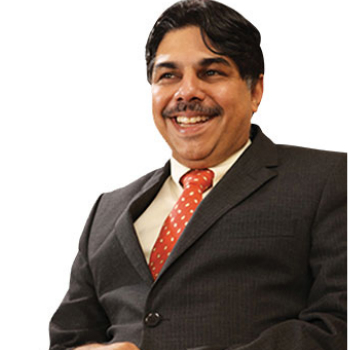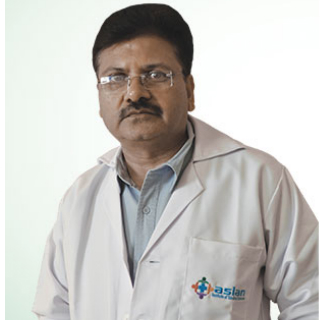
Dr Anubha Singh, Medical Director, Shantah Fertility Centre, discusses the infertility issues and the IVF scenario in India with Shahid Akhter, ENN
How common is male infertility today, and what are the underlying reasons?

It is a widely prent myth that infertility is synonymous with female problem. Almost 40 percent of infertility cases concern men. A good many obstacles to conception stem from male issues like low-sperm count, sperm motility, erection issues, ejaculation, passage of sperms which may be blocked, or damaged due to bacterial infection that cause scarring or blockage of tubes. At times, infertility is the outcome of both male and female factors.

How do you take care of the first visit by infertile couples?

We always recommend couples coming together so that both of them understand the issues, and be a partner in our approach leading to the solution. The tests are explained to them in detail, and the outcomes are discussed. We begin with the detailed history, followed by investigations. Next comes counselling session where we invite all questions and doubts that the couple may be dwelling upon. In fact, counselling is a part of treatment, and is offered at all stages “ prior to the treatment, during treatment and post-treatment. This is very important to erase the doubts and make the couples feel positive about the progress of the treatment. We also make them understand that stress is a big fertility robber and can even hurt the relationship.
Diagnostic tests begin with Base- line 3C Ultrasound to do AFC (Antral Follicel Count) and also to check endometrial cavity.

What difficulties do you face while convincing IVF couples?
Following all tests and investigations when we are convinced that IVF is the only solution, we share this with the couples but still they look out for alternative minor treatments including medication. The cost factor is another impediment that makes the couple think again before they invest the amount. Some patients even turn up to us for some sort of guarantee or assurance that the child is assured, fol lowing the investment. Some look out for second opinion which is certainly a healthy thing to do but often people fall prey to unscrupulous IVF centres.
Some of the couples are too stressed, they need to relax and think of togetherness and time out. Some couples overread the internet, assess themselves, and arrive at their own conclusion which may be riddled with flaws. Ovulation kit is not recommended for the simple reason of misreading and misinterpretation which impacts the performance level.
What primary investigations do you recommend?
We begin with an ultrasound to check early stage developing follicles called Antral Follicles. Low count indicates low ovarian reserve, and thus treatment plan done accordingly. Other tests include “ AMH (Anti-mullerian hormone), it is the hormone released by small Antral Follicles; Immunological Tests “ if indicated, other tests may include screening for Rubella, Viral, HIV, Hepatitis B and Syphilis.
In males, the initial tests begin with semen analysis, WHO has set a refer- ence value, like semen volume needs to be 1.5 ml or more with pH “ 7.2 or more, sperm concentration should be 15 million sperms/ml or more, total motility is supposed to be no less than 40 percent, progressive motility should be 32 percent or more, vitality should be 58 percent and the sperm morphology is supposed to be at least four percent.
“Our quality of service is at par with the best in the West, and we charge a fraction of the IVF cost”
Who is an ideal candidate for IVF?
IVF should be your treatment option if you have been diagnosed with unexplained infertility, or your fallopian tubes are blocked, or you have been unsuccessful with other techniques like using fertility drugs or intrauterine insemination (IUI). Add to this some extent of male sub-fertility more severe problems are treated with Intracytoplasmic Sperm injection (ICSI).
How would you sum up a typical IVF treatment?
Normally, it begins with the suppression of the natural monthly hormone cycle. This is induced through a drug via routine injections. The next step is to boost the egg supply by giving a fertility hormone (more precisely Follicle Stimulating Hormone “ FSH in short, again a set of routine injections for about two weeks. This will lead to enhanced number of eggs and with more fertilized eggs, the chance of getting pregnant increases. During the process, ultrasound scans, blood tests are conducted to monitor the progress. To ensure that the eggs mature, a hormone injection is given 34-38 hours prior to egg collection. This happens under sedation by ultrasound guidance and the eggs are harvested through a needle.
Finally the eggs are mixed with sperms and cultured in the laboratory for about a day to ensure fertilization. The fertilized eggs or embryos are grown in the incubator for few days and the best ones chosen for transfer.
What is the USP of Shantah Fertility Centre and its success rate?
Our success rate is 40 to 50 percent, and we take pride in patient satisfaction at every stage. We encourage them to ask questions, so that they get the feeling of participation in the entire process. We love to adhere to the British protocol as I have spent 11 years in IVF centres in UK where things are so well-regulated, reported and documented which is in the interest of both, the IVF centre as well as the couples seeking treatment.
At Shantah Fertility Centre, we strive to maintain highest standard of clinical work, and we have a well-equipped, state-of-the-art lab which is the driving force behind the IVF centre.
Be a part of Elets Collaborative Initiatives. Join Us for Upcoming Events and explore business opportunities. Like us on Facebook , connect with us on LinkedIn and follow us on Twitter , Instagram.
"Exciting news! Elets technomedia is now on WhatsApp Channels Subscribe today by clicking the link and stay updated with the latest insights!" Click here!













